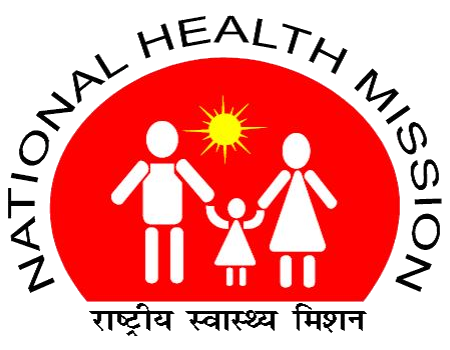Immunization
Background notes on Immunization: -
· Expanded Programme on Immunization was launched in 1978. It was renamed as Universal Immunization Programme in 1985 when its reach was expanded beyond urban areas. In 1992, it became part of Child Survival and Safe Motherhood Programme and in 1997 it was included in the ambit of National Reproductive and Child Health Programme. Since the launch of National Rural Health Mission in 2005, Universal Immunization Programme has always been an integral part of it.
· Universal Immunization Programme (UIP) is one of the largest public health programmes targeting close of 2.67 crore newborns and 2.9 crore pregnant women annually.
· It is one of the most cost-effective public health interventions and largely responsible for reduction of vaccine preventable under-5 mortality rate.
· Under UIP, immunization is providing free of cost against 12 vaccine preventable diseases:
· Nationally against 9 diseases - Diphtheria, Pertussis, Tetanus, Polio, Measles, Rubella, severe form of Childhood Tuberculosis, Hepatitis B and Meningitis & Pneumonia caused by Hemophilus Influenza type B
· Sub-nationally against 3 diseases - Rotavirus diarrhoea, Pneumococcal Pneumonia and Japanese Encephalitis; of which Rotavirus vaccine and Pneumococcal Conjugate vaccine are in process of expansion while JE vaccine is provided only in endemic districts.
· A child is said to be fully immunized if child receives all due vaccine as per national immunization schedule within 1st year age of child.
· The two major milestones of UIP have been the elimination of polio in 2014 and maternal and neonatal tetanus elimination in 2015.
New vaccines
· Inactivated Polio Vaccine (IPV): IPV has been introduced in UIP as part of Global Polio end-game strategy, to mitigate the risk associated with tOPV to bOPV switch. IPV was introduced in November 2015 initially in 6 states, which was expanded across the country by April 2016.
· Rotavirus vaccine (RVV): RVV has been introduced to reduce mortality and morbidity caused by Rotavirus diarrhoea in March 2016. It has been introduced in 11 states (Andhra Pradesh, Haryana, Himachal Pradesh, Jharkhand, Odisha, Assam, Tripura, Rajasthan, Tamil Nadu, Madhya Pradesh and Uttar Pradesh). The vaccine will be expanded across the country in 2019-20.
· Measles Rubella (MR) vaccine: India is committed to the goal of measles elimination and rubella control and to achieve the goal MR vaccine was introduced in the country through a campaign mode in a phased manner in 2017. MR campaign target around 41 crore children in the age group of 9 months to 15 years (covering ⅓ of the total population of the country) followed by 2 doses in routine immunization at 9-12 months and 16-24 months. Rubella component is now under routine immunization as MR vaccine.
· Pneumococcal Conjugate Vaccine (PCV): PCV has been launched in May 2017 for reducing Infant mortality and morbidity caused by pneumococcal pneumonia. It has been introduced in Bihar, Himachal Pradesh, Madhya Pradesh, 19 districts of Uttar Pradesh and 18 districts of Rajasthan.
· Tetanus and adult diphtheria (Td) vaccine: TT vaccine has been replaced with Td vaccine in UIP to limit the waning immunity against diphtheria in older age groups. Td vaccine to be administered to adolescents at 10 and 16 years of age and to pregnant women.
Mission Indradhanush
· Mission Indradhanush (MI) was launched in December 2014 and aims at increasing the full immunization coverage to children to 90%.
· Under this drive focus is given on pockets of low immunization coverage and hard to reach areas where the proportion of unvaccinated and partially vaccinated children is highest.
· A total of six phases of Mission Indradhanush have been completed covering 554 districts across the country.
· It was also identified as one of the flagship schemes under Gram Swaraj Abhiyan (16,850 villages across 541 districts) and Extended Gram Swaraj Abhiyan (48,929 villages across 117 aspirational districts).
· While the first two phases of Mission Indradhanush resulted in 6.7% increase in full immunization coverage in a year, a recent survey carried out in 190 districts covered in Intensified Mission Indradhanush (5th phase of Mission Indradhanush) shows 18.5% points increase in full immunization coverage as compared to NFHS-4 survey carried out in 2015-16.
New Initiatives in Vaccine Logistics & Cold Chain Management
· Capacity building
National Cold Chain Training Centre (NCCTE), Pune and National Cold Chain & Vaccine Management Resource Centre (NCCVMRC) -NIHFW, New Delhi have been established to provide technical training to cold chain technicians in repair & maintenance of cold chain equipment
· Electronic Vaccine Intelligence Network (eVIN) rollout:
The Government of India has rolled out an Electronic Vaccine Intelligence Network (eVIN)system that digitizes the entire vaccine stock management, their logistics and temperature tracking at all levels of vaccine storage – from national to the sub-district.
This enables program managers to have real time view of the vaccine stock position and their storage temperature across all the cold chain points providing a detailed overview of the vaccine cold chain logistics system across the entire country.
National Cold Chain Management Information System (NCCMIS) to track the cold chain equipment inventory, availability and functionality.
 NHM Mizoram
NHM Mizoram